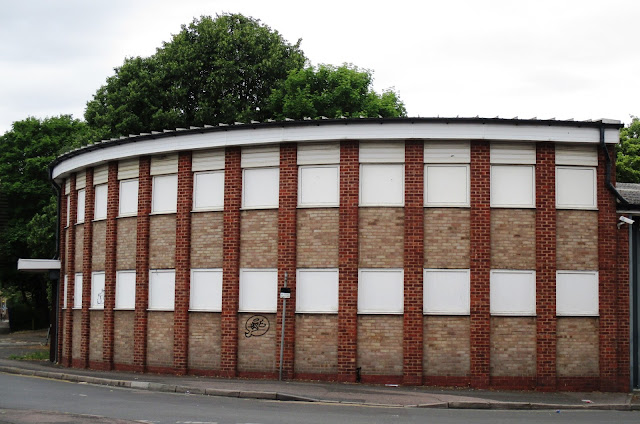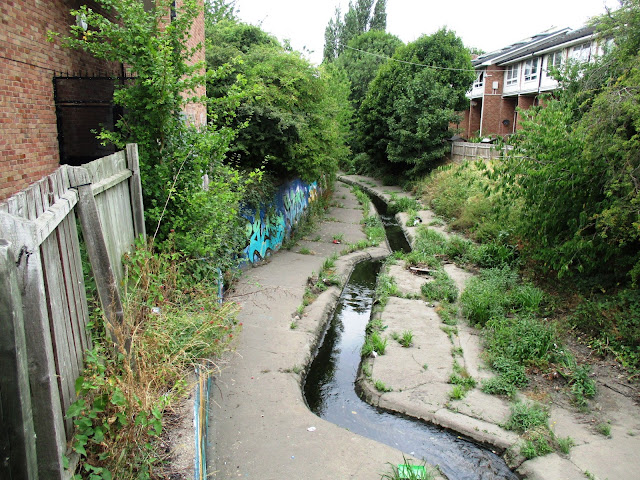Blogging about Leicester's Willow Brook, after seeing it emerge from beneath Belgrave Circle to enter the canal, I suggested it offered "the possibility of some urban river walks of the sort I post here by John Rogers". I tried the first of those walks on Saturday, heading upstream.
The pictures above shows the brook flowing towards me as it approaches Belgrave Circle. The stream is contained in a concrete channel - a contrast with its natural appearance on the other side of the roundabout - but at least there was a brisk flow.
I next caught up with the brook at Syston Street West at the Falcon Cash & Carry. The brook runs behind the palisade fence to the left of the building.
The far side of the stream was the site of Leicester's lost railway terminus: the GNR's Leicester Belgrave Road. Together with its goods yards, it occupied a huge site. I'll do a separate post comparing the station in its pomp with what you will find there today.
But as you can see, the cash and carry and its neighbouring buildings were obviously there long before the railway site was cleared in the 1970s. (Trains ran to an oil depot here until 1969.) And some of them are built over the brook. Could it be that they had some connection with the railway?
The next bridge to cross the brook carries Orchardson Avenue. Beside it stands a rather smart, but obviously disused, office building. Then we look upstream to see the brook continuing in its concrete channel - I'll try not to show you too many photos like that.
Catherine (the last syllable rhymes with fine) Street comes next. It used to soar over the railway tracks on almost a viaduct just past its bridge over the brook, but that has been swept away and the road now runs at ground level.
And in this photo looking upstream from the Catherine Street bridge you can see, if you look carefully, that the Willow Brook still helps to drain the land on its banks.
In finding the brook again I came across these two fine (though not always finely photographed) Victorian industrial buildings. The sign saying "Curzon Howe Works" is made up of original tiles.
I caught up with the Willow Brook again at Cobden Street. There was a greasy spoon takeaway to service all the industrial premises in this party of the city and another with an Indian menu just down the road.
The brook itself was free of its narrow artificial channel, looking more like it did when I first saw it entering the canal on the other side of Belgrave Circle.
Upstream of Cobden Street, the Willow Brook enters a tunnel beneath the Midland main line and the land once occupied by the sidings and goods yards beside it.
This last photo may show the brick portal of that tunnel, though the satellite photograph on Google has a line of greenery extending for a bit further, though this may be a remnant of the brook's old course.
The parallel fences, by contrast, suggest the stream does stay above ground a little longer, but it didn't look the kind of site that would welcome visitors.
One day I shall pick up the Willow Brook on the other side of the railway and follow it further across the city. But first I shall post a video by some more principled urban explorers who have walked through the tunnel - it's a surprisingly impressive structure.
I hope it's been clear which words relate to which pictures. Thanks to John Rogers for the inspiration: as he says, following rivers - lost or still existent - takes you to parts of a city you wouldn't otherwise see.














No comments:
Post a Comment